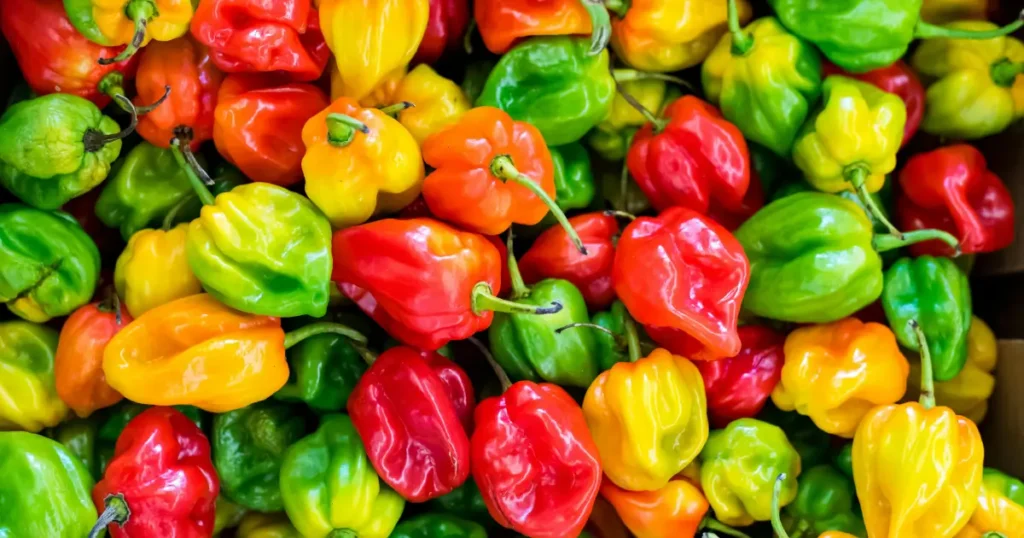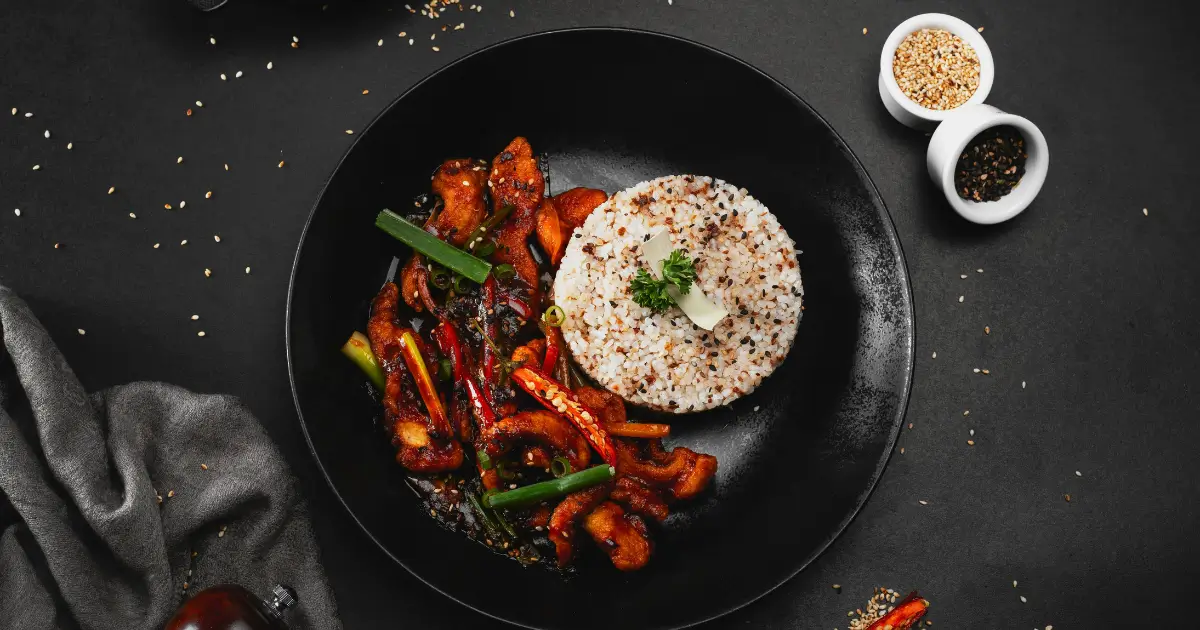Table of Contents
Did you know that Calabrese peppers make up over 50% of the world’s sweet pepper production? This Italian favorite, part of the Capsicum annuum family, is loved for its unique taste, bright colors, and health benefits. Let’s explore the world of Calabrese peppers and see why they’re a key part of Italian cooking.
What Are Calabrese Peppers: Origin and History
Calabrese peppers, also known as Italian peppers or bell peppers from Calabria, have a rich history. They’re native to Italy’s Calabria region. These peppers have been a key part of Italian cooking for centuries.
Traditional Italian Heritage
Calabrese peppers started in the Calabria region, a southern Italian area known for its unique food. They’ve been a main ingredient in Italian dishes for many years. This shows the region’s rich farming and cooking traditions.
Cultural Significance in Calabria
In Calabria, Calabrese peppers are very important. They’re loved for their taste and are a big part of local celebrations and meals. Growing and using these peppers is a big part of the region’s traditions.
Evolution of Cultivation
The way Calabrese peppers are grown has changed over time. Growers in Calabria have improved their methods to get better flavor and yield. This has kept Calabrese peppers popular worldwide.
Physical Characteristics of Calabrese Peppers
Calabrese peppers, also known as Italian peppers or sweet peppers, stand out with their unique look. They come in bright colors like green peppers, red peppers, and yellow peppers. Each color has its own taste and look.
When they’re young, Calabrese peppers are bright green. As they grow, they turn red, yellow, or orange. This change makes them look more appealing and changes their taste and health benefits.
Calabrese peppers are medium-sized, usually 4 to 6 inches long. Their shape can vary, but they’re always crisp and juicy. This makes them great for many dishes.
Compared to bell peppers or jalapeños, Calabrese peppers are bigger and more robust. Their special look makes them a favorite in many recipes. They’re perfect for salads, stir-fries, grilling, and roasting.
Flavor Profile and Taste Experience
Calabrese peppers have a unique taste that stands out. They mix sweetness with a hint of heat. This makes them a delight to eat.
Heat Level and Spiciness
Calabrese peppers are not very hot. They fall between 500-2,500 Scoville Heat Units (SHU). This makes them great for those who like peppers but don’t want too much heat. The heat can change based on how they grow and when they’re picked. But their flavor always stays enjoyable.
Comparison to Other Sweet Peppers
Calabrese peppers taste different from other sweet peppers. They are sweeter and have a stronger flavor than some. This makes them perfect for adding depth to many dishes.
Flavor Development During Ripening
- As Calabrese peppers mature, their flavor changes a lot.
- When they’re young and green, they taste fresh and grassy. As they ripen to a deep red, their flavor gets sweeter and more layered.
- The flavor gets even better as they ripen fully. This adds to the pleasure of eating them.
| Pepper Variety | Scoville Heat Units (SHU) | Flavor Notes |
|---|---|---|
| Calabrese Pepper | 500-2,500 SHU | Sweet, balanced pepper flavor, intensifies as it ripens |
| Bell Pepper | 0 SHU | Mild, sweet, crisp |
| Sweet Banana Pepper | 500-2,500 SHU | Slightly sweet, mild heat, fresh flavor |
Growing and Harvesting Guide

Growing Calabrese peppers in your garden is rewarding. You get to enjoy their unique flavor and versatility. This guide helps both new and experienced gardeners grow and harvest sweet peppers successfully.
Ideal Climate and Soil Conditions
peppers love warm, sunny spots and rich, well-draining soil. They do best in temperatures between 70-85°F (21-29°C). They also like moderate humidity.
Make sure your garden gets lots of sunlight, at least 6 hours a day. This is key for their growth and fruit development.
Planting and Care
- Start peppers from seed indoors, 6-8 weeks before the last frost.
- Move seedlings outside, 18-24 inches (45-60 cm) apart, in good soil.
- Water plants regularly but don’t overdo it.
- Use cages or stakes to help support the plants as they grow.
- Fertilize every 4-6 weeks to keep nutrients flowing.
Harvesting Tips
Harvesting sweet peppers at the right time is important. Look for these signs:
- Peppers should be 3-4 inches (7-10 cm) long.
- The skin should be shiny and have turned from green to deep red.
- Peppers should come off the plant easily when pulled.
Harvest peppers often to keep the plant producing more. Enjoy them fresh, or preserve them to enjoy later.
Nutritional Benefits and Health Properties
Calabrese peppers, also known as Calabrian peppers, are a treat for your taste buds and your health. They’re loaded with vitamins, minerals, and antioxidants, all of which can enhance your health and overall well-being.
Vitamin and Mineral Content
Calabrese peppers are a powerhouse of vitamin C. They offer almost double the daily recommended amount in one serving. Vitamin C is key for a strong immune system and helps with collagen production. They also have vitamin A, which is good for your eyes and helps cells grow.
These peppers are also rich in important minerals like potassium, magnesium, and iron. Potassium keeps blood pressure in check. Magnesium is important for muscles and nerves. Iron helps speed up the transport of oxygen in the body.
Antioxidant Properties
Calabrese peppers are full of antioxidants. These compounds fight off harmful free radicals and protect cells from damage. They contain carotenoids like capsanthin and capsorubin, which make them bright red-orange. These carotenoids may lower the risk of diseases like cancer and heart disease.
Health Benefits
Eating Calabrese peppers can bring many health benefits. Their vitamin C can strengthen your immune system. The antioxidants in them may reduce inflammation and help your heart. They may also help manage diabetes and support digestion.
Adding Calabrese peppers to your meals can add flavor and improve your health. They are a nutritious and versatile choice for your cooking.
Culinary Uses and Popular Recipes
Calabrese peppers are great for many dishes. They add a sweet, slightly spicy taste. This makes them perfect for stuffed peppers, filled with cheese, breadcrumbs, and herbs.
Roasting Calabrese peppers brings out their natural sweetness. This creates a perfect mix of sweet and spicy flavors.
In Italian cooking, Calabrese peppers are key in pasta sauces. They add heat and depth. You can add them to marinara, pesto, or even eggplant parmigiana.
They also brighten up salads and crudité platters. Their color and taste are unique and exciting.
For something new, grill or sauté Calabrese peppers. Serve them as a side or blend them into dips. They’re versatile, fitting into both traditional and modern dishes.

